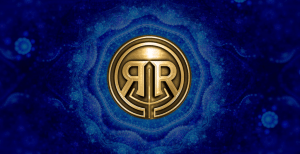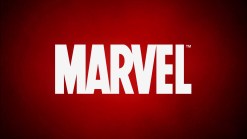
Honoring a Middle-Grade Legacy
Toni Morrison (1931-2019) left an essential legacy for middle-grade readers, even though she didn’t write directly for them. You won’t find her books in the MG section of the bookstore, nor are they on the reading lists for the 4th-8th grade set, as are the novels we talk about here on this blog. And yet, many of her characters were middle-grade children, and most of her themes had to do with the formative experiences of those years, experiences that ground and shape us as adults. So, when she died on August 6th, I gave myself permission, based on those reasons, to pay homage to her here.
Doors and Mirrors
I wanted to honor her brilliant and groundbreaking work as a Nobel and Pulitzer Prize-winning author and her crucial role in bringing forward many of the threads of the African-American narrative to the larger American conversation. But even more than that, I wanted to talk about how she opened doors for a new generation of passionate, creative authors who write a wider, more diverse world for young readers. By doing that, she lifted up mirrors for children to see themselves in a rainbow world. She painted a world in which we could all be beautiful. As a writer and a woman of color, I am deeply grateful to her for the path she forged.

It’s Personal
The truth is, my gratitude is both professional and personal.
When I was in college in the mid-eighties, I read THE BLUEST EYE (Alfred A. Knopf, Inc. 1970), and I cried over Pecola and her desire for blue eyes.

My deep sadness wasn’t just for Pecola though–it was also for me and my own secret childhood desire: I too wished I had blue eyes. Like Pecola, I bought into the standard of White beauty that didn’t include my mixed-race identity, and certainly not my brown eyes, hair, or skin. I actually wished away my Black heritage.
And because, like any self-respecting young teenager, I vigorously rejected everything my parents told me, I didn’t believe them when they told me I was pretty. I knew I wasn’t. To be pretty, I needed to have not just blue eyes, but also straight, blonde or at least light brown hair. Hair that did what Farrah Fawcett’s or Jaclyn Smith’s did. Not curly, unmanageable, humidity-challenged like my own. Fawcett and Smith were my version of Pecola’s and Frieda’s admiration of Shirly Temple.



Definitions of Beauty
Fortunately, finally, I evolved and learned to identify and reject my own racism. I lived in Africa for a few years and discovered a treasure trove of literature that celebrated dark skin and curly hair. I reexamined THE BLUEST EYE and saw more clearly what Morrison was saying about what beauty is, and what it isn’t.
Morrison clarified even further when she said, in an Afterword published in 1993, “…the novel pecks away at the gaze that condemned her (a friend who, like Pecola, wanted blue eyes)…The assertion of racial beauty was not a reaction to the self-mocking, humorous critique of cultural/racial foibles common on all groups, but against the damaging internalization of assumptions of immutable inferiority originating in an outside gaze. I focused, therefore, on how something as grotesque as the demonization of an entire race could take root inside the most delicate member of society: a child; the most vulnerable member: a female.”

I wasn’t necessarily “cured” of my own internalized assumptions, but that’s a whole different story. I did, however, continue to grow, and as I did, other writers of color were adding their voices to the joyful noise: Ntozake Shange, Amy Tan, Isabel Allende, bel hooks, Octavia Butler, Alice Walker.
Middle-Grade Genre Growth
Over the glacial timeline that is publishing, the middle-grade genre has exploded as a viable commodity, as has the demand for diverse books and #ownvoices authors. Today, it’s delightfully harder to assume the “white default” with many fictional characters because they’re not the only ones on the tableau. I’m not saying the characters-of-color have reached parity – not by a long shot. But their numbers increase every year, and I’m thrilled to witness and be a part of that growth.
Thank You
I believe we owe that in large part to Toni Morrison, and so for that, I say, THANK YOU. Thank you, Ms. Morrison, for being the light, the creative force, the energy, passion, and intellect that will continue to shine long past the years you were here with us.
“And so here I am now. Here we all are. Toni Morrison as light, as way, as ancestor. And the many writers she has left in her wake, and the many writers coming after, and those after them, will hopefully always know this: that because of her, we are.” – Jacquelyn Woodson, from her tribute essay in the Washington Post, August 11, 2019
And because here at the Mixed-Up Files … of Middle-Grade Authors, we do booklists, here’s one for Toni:
Book List in Honor of Toni Morrison

BROWN GIRL DREAMING, by Jacqueline Woodson
Raised in South Carolina and New York, Woodson always felt halfway home in each place. In vivid poems, she shares what it was like to grow up as an African American in the 1960s and 1970s, living with the remnants of Jim Crow and her growing awareness of the Civil Rights movement. Touching and powerful, each poem is both accessible and emotionally charged, each line a glimpse into a child’s soul as she searches for her place in the world.

THE MOON WITHIN, by Aida Salazar.
Celi Rivera’s life swirls with questions. About her changing body. Her first attraction to a boy. And her best friend’s exploration of what it means to be genderfluid.But most of all, her mother’s insistence she have a moon ceremony when her first period arrives. It’s an ancestral Mexica ritual that Mima and her community have reclaimed, but Celi promises she will NOT be participating. Can she find the power within herself to take a stand for who she wants to be?

GENESIS BEGINS AGAIN, by Alicia D. Williams
There are ninety-six things Genesis hates about herself. She knows the exact number because she keeps a list. Like #95: Because her skin is so dark, people call her charcoal and eggplant—even her own family. And #61: Because her family is always being put out of their house, belongings laid out on the sidewalk for the world to see. When your dad is a gambling addict and loses the rent money every month, eviction is a regular occurrence.

SHADOWSHAPER, by Daniel Jose Older (Actually YA, but appropriate for older MG readers)
With the help of a fellow artist named Robbie, Sierra discovers shadowshaping, a magic that infuses ancestral spirits into paintings, music, and stories. But someone is killing the shadowshapers one by one. Now Sierra must unravel her family’s past, take down the killer in the present, and save the future of shadowshaping for generations to come.

A GOOD KIND OF TROUBLE, by Lisa Moore Ramée
twelve-year-old Shayla is allergic to trouble. All she wants to do is to follow the rules. (Oh, and she’d also like to make it through seventh grade with her best friendships intact, learn to run track, and have a cute boy see past her giant forehead.)But in junior high, it’s like all the rules have changed. Now she’s suddenly questioning who her best friends are and some people at school are saying she’s not black enough. Wait, what?

ONE CRAZY SUMMER by Rita Williams-Garcia
Eleven-year-old Delphine is like a mother to her two younger sisters, Vonetta and Fern. She’s had to be, ever since their mother, Cecile, left them seven years ago for a radical new life in California. But when the sisters arrive from Brooklyn to spend the summer with their mother, Cecile is nothing like they imagined.

KARMA KHULLAR’S MUSTACHE, by Kristi Wientge
Karma Khullar is about to start middle school, and she is super nervous. Not just because it seems like her best friend has found a newer, blonder best friend. Or the fact that her home life is shaken up by the death of her dadima. Or even that her dad is the new stay-at-home parent, leading her mother to spend most of her time at work. But because she’s realized that she has seventeen hairs that have formed a mustache on her upper lip. Read author Kristi Wientge’s interview here on this blog.

MEXICAN WHITEBOY, by Matt De La Peña
Danny is brown. Half-Mexican brown. And growing up in San Diego that close to the border means everyone else knows exactly who he is before he even opens his mouth. Before they find out he can’t speak Spanish, and before they realize his mom has blond hair and blue eyes, they’ve got him pegged. But it works the other way too. And Danny’s convinced it’s his whiteness that sent his father back to Mexico.
That’s why he’s spending the summer with his dad’s family. But to find himself, he may just have to face the demons he refuses to see–the demons that are right in front of his face. And open up to a friendship he never saw coming.














